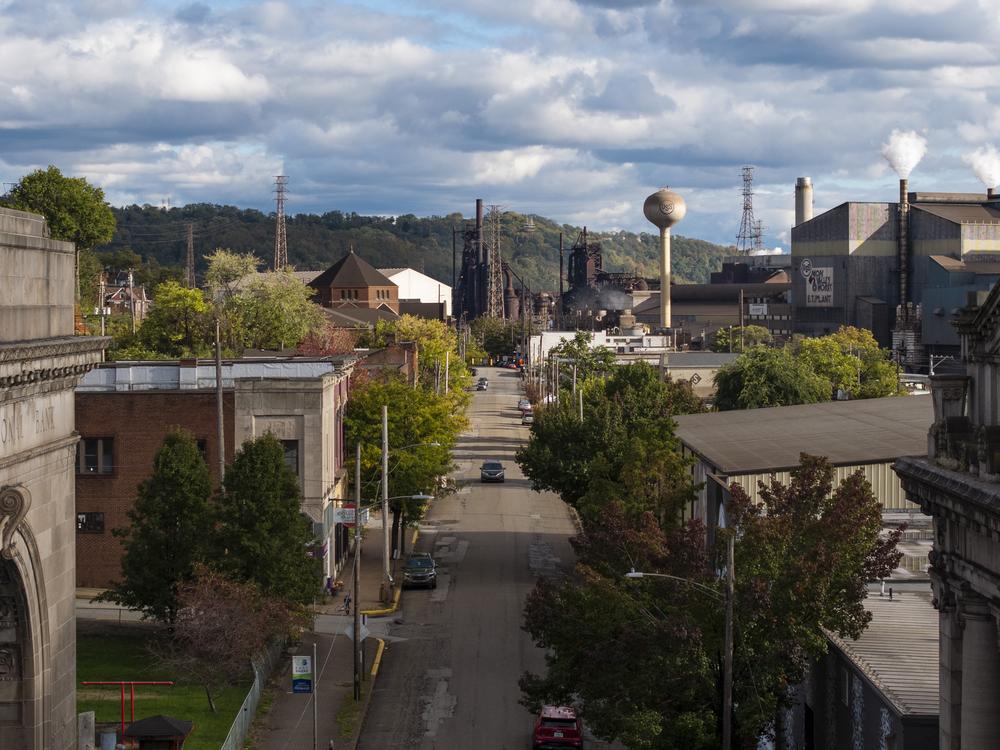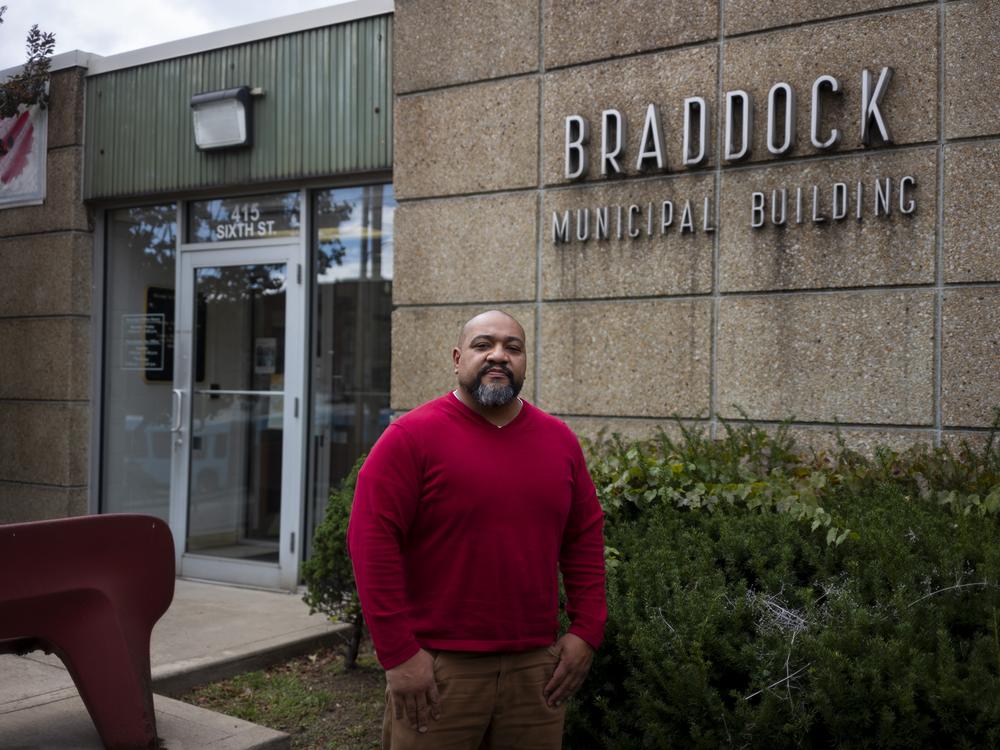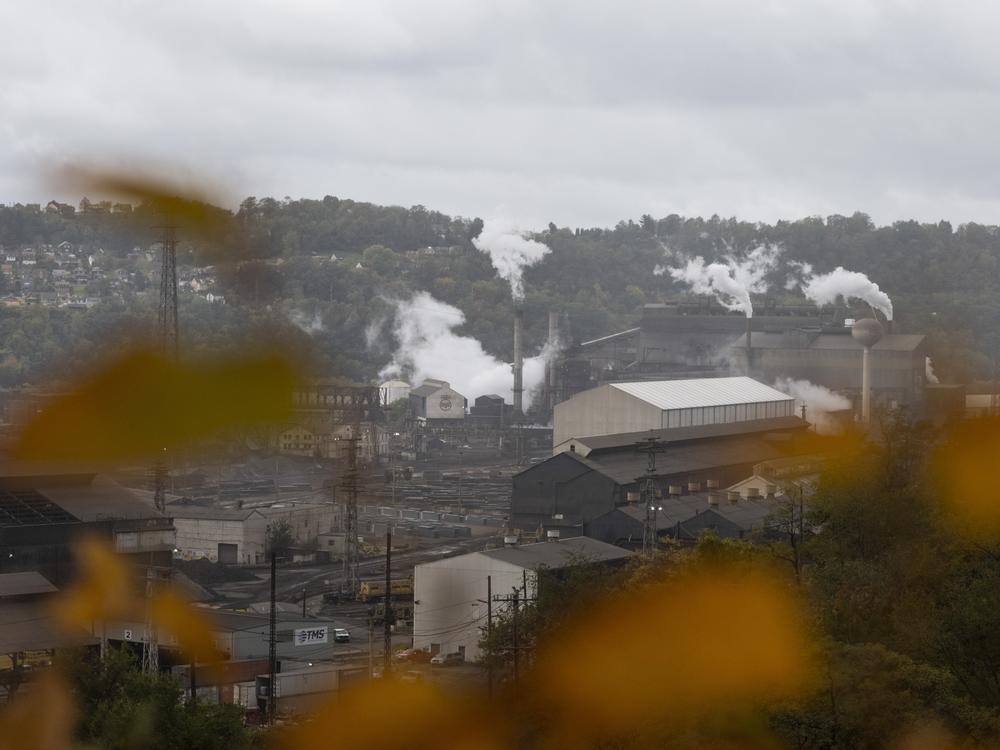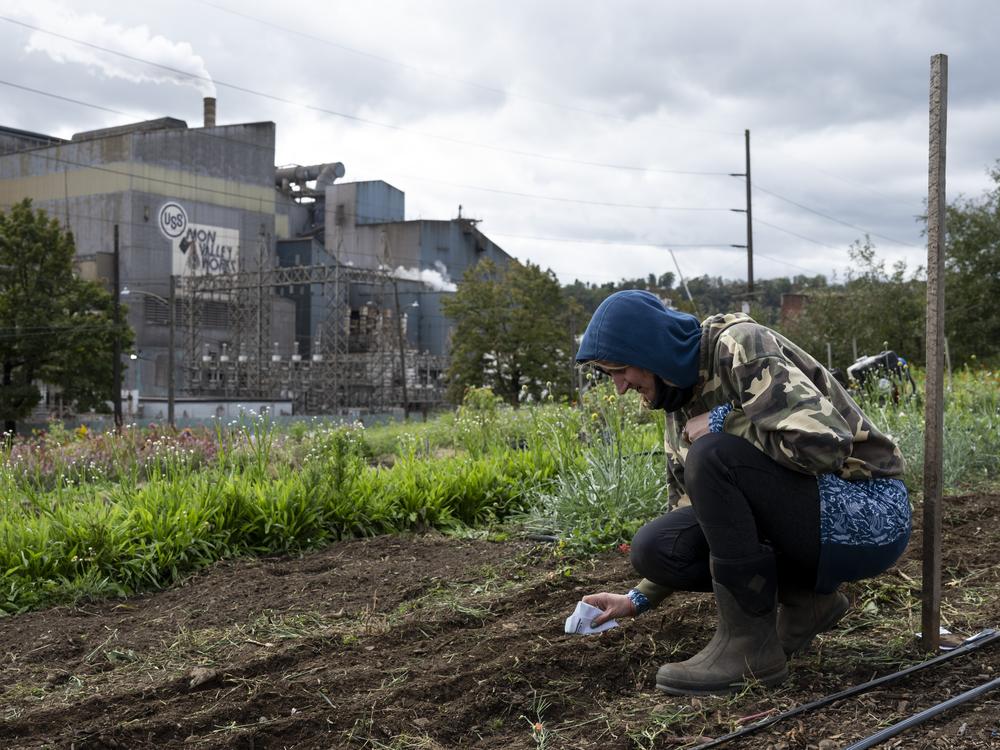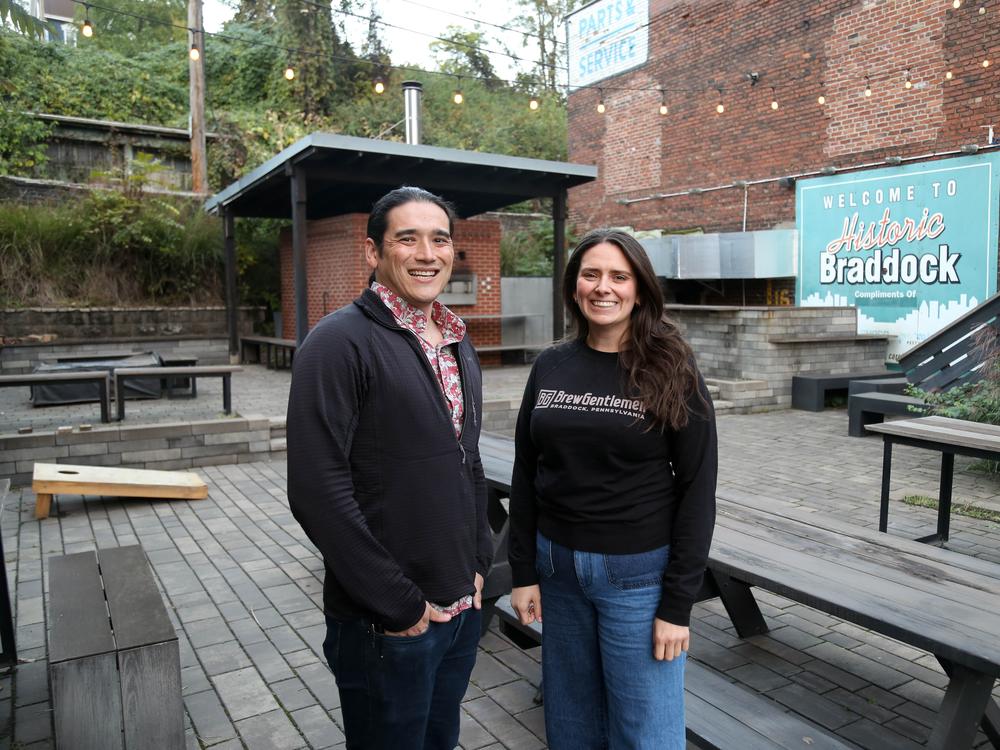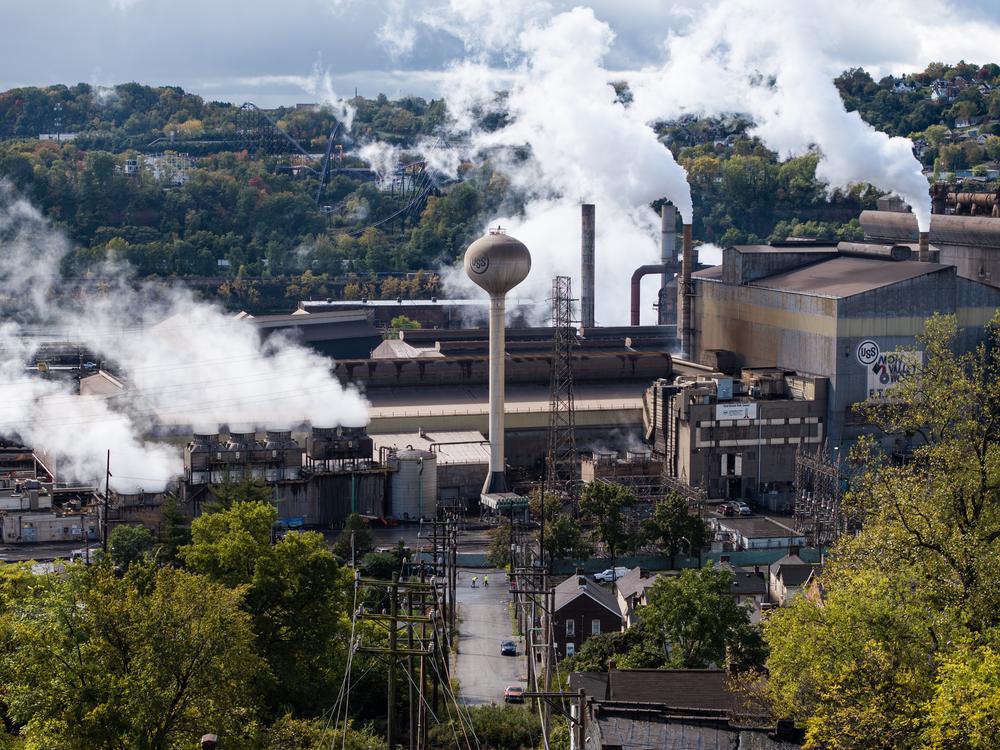Section Branding
Header Content
U.S. Steel’s decline nearly killed this town. Its sale could save it
Primary Content
BRADDOCK, Pa. – Smoke spewing from an Edgar Thomson Works smokestack wafts over southwest Pennsylvania’s Monongahela River.
Carnegie Steel began operating the massive mill in 1875, and it has produced continuously since U.S. Steel incorporated in 1901.
At its peak, U.S. Steel employed about 340,000 workers, the Pittsburgh Post-Gazette reported on the company's 100-year anniversary. Thousands of families from Pittsburgh, Braddock and the Mon Valley region relied on the company for work.
As the steel industry evolved and declined, though, jobs were cut. Company officials say that the once-booming enterprise now employs about 4,000 people in this area; Edgar Thomson Works employs about 650 workers.
Many Braddock residents who once worked there left. The borough’s population fell from a high of about 20,000 in 1920 to about 1,700 today. Most of the residents are Black and aging.
The proposed sale of the once mighty U.S. Steel for more than $14 billion to a Japanese company casts a shadow over Braddock’s future just as the nearly two-mile long rusted and weathered facility does over the town’s main road.
With days to go before the election, many residents here are concerned that they’ve gone unheard by the national figures vying to lead the country. Both former president Donald Trump and Vice President Harris have opposed the sale to Nippon Steel of Japan, but some feel that allowing it would be better for Braddock and the region.
Braddock borough manager Lou Ransom Jr. is one of them. He said he understands why opposing the sale is politically favorable, but he is concerned that blocking it would jeopardize the town’s financial stability.
Selling U.S. Steel to its potential foreign buyer is one way to make the most of the situation while it’s still viable, as Ransom sees it. He worries that selling the company to a U.S. buyer could deal a major blow to Braddock’s tax base if a buyer decided to close the mill altogether.
U.S. Steel is the largest owner of land in Braddock, meaning it foots the largest property tax bill, Ransom said.
“Having an American name on top doesn’t necessarily mean it’s going to be the best for the local economies and the boroughs in general,” Ransom said.
Nippon Steel has pledged to invest about $1.3 billion into the four Mon Valley Works facilities U.S. Steel operates in Pennsylvania, three of which are on the outskirts of Pittsburgh.
In a statement to NPR, U.S. Steel said it remains in support of the sale and that it “will strengthen the American steel industry, American jobs, and American supply chains, and enhance the U.S. steel industry's competitiveness and resilience against China.”
The company pointed to an impact study it commissioned that found the investment could generate about 5,000 construction jobs and millions of dollars in state and local taxes.
The sale was first proposed late last year. President Biden opposed it, even going so far as threatening to block it, citing national security concerns.
The United Steelworkers national union also opposed it and argued unsuccessfully before an arbitration court that the Japanese would-be owners didn’t understand the commitment needed to the workers – current and retired – and the surrounding communities. The union also expressed concerns about enforcement of labor practices and financial transparency and stated support for selling to a U.S. buyer.
Ransom, who has managed the borough for about a year now, grew up on the northside of Pittsburgh. He recalls when Edgar Thomson Works employed thousands more workers and the smokestacks emitted so much that it was hard to see the sky, with soot sticking everywhere – something that has drawn environmental and air quality concerns for decades.
The sale itself might not be enough. Ransom believes the town needs a way to incorporate into the Pittsburgh region’s future.
“The jobs we had from steel are not coming back,” Ransom said. “The type of production that economy had in the past is not going to return because we have automation and technology that precludes you from building a workforce based on manufacturing the way that it was.”
Across the street from the steel mill, potential change and diversification of Braddock’s economy is directly visible. A sign featuring two steelworkers and a mill ladle, carrying molten steel, hangs on the outer brick wall of Braddock Public House. “Braddock” flashes in neon red underneath the homage to the mill’s history.
The eatery, which opened about a month ago, is the second local venture from co-owners Alaina Webber, 33, and Matt Katase, 34. They lease the building from U.S. Sen. John Fetterman, who rose to political prominence after serving as Braddock’s mayor for 13 years.
Fetterman visited Carnegie Mellon in 2014, when Katase said he was a student there, and “talked about Braddock and this kind of urban frontier and kind of pitched Braddock as this arts haven.”
Katase, originally from Hawaii, wanted to open a business and felt like Braddock was the place to do it.
They first opened Brew Gentlemen, a brewery less than a mile down the road, 10 years ago. The brewery’s products are distributed across Pittsburgh and parts of Pennsylvania.
Webber, a Duquesne University graduate who grew up in Pittsburgh, said they designed Braddock Public House with the town’s history in mind. She often hears about its past as a thriving steel town with shopping and entertainment. The eatery occupies a building that was once home to one of the first indoor Chevy dealerships in the U.S.
The old saying, according to nostalgic customers, was that “if you couldn’t get it in Braddock, you couldn’t get it anywhere,” Webber said.
In recent years, some artists have moved to the borough and found studio spaces to work out of. More businesses have opened. And last year, Pennsylvania Gov. Josh Shapiro ended the borough’s “distressed municipality status” after officials here eliminated its operational deficits and improved its overall financial standing.
Katase and Webber said they participate in town fundraisers and try to find other ways – apart from making sure their sister ventures pay taxes– to benefit local residents.
But the Edgar Thomson plant plays an outsized role in the borough, and the thought of it closing weighs on them.
“That mill is a big ugly chunk of steel to some people, but we think it's beautiful and mysterious and crazy,” Webber said. “It's also a presence and a real foundation. And this town has already gone through depopulation. We don't need to see it to know that that closing would also have an effect. We've seen it once already.”
The uncertain trajectory Braddock is on now is why Ransom wants to see the borough evolve with Pittsburgh.
“Steel is a big part of the history, but steel has left for the most part,” Ransom said. “There’s a lot of medicine, there’s a lot of art, there’s a lot of technology.”
He would like to see his borough collaborate with other nearby municipalities, like Rankin to the west and North Braddock and East Pittsburgh to the east, on services like police and trash collection.
He feels Braddock could build on its central location and essentially serve as the “main street” for the area.
Reviving Braddock beyond the steel deal, he believes, will require all of it – the sale of U.S. Steel, local investment and collaboration – because “a rising tide raises all ships.”
This story is part of "We, The Voters," NPR's election series reported from the seven swing states that will most likely decide the 2024 election.
This story was edited by Majd Al-Waheidi.
